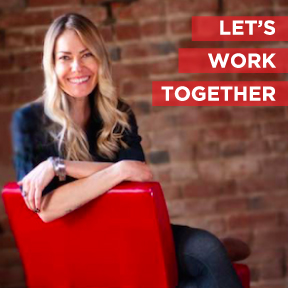Meditation and What it Can Do For You.
“The quieter you become, the more you can hear.” – Ram Dass
Sitting in silence. Eyes closed. Focusing on your breath. Turning your attention inward and stilling the activities of the mind. This experience of meditation may sound simple and accessible or conversely, unattainable.
If you already have a meditation practice this description may sound familiar. If you’ve been practicing for a long time, you may have come to know that our internal work is never done––that every day, the journey to our inner self is completely different.
If you have begun the practice of quieting mind chatter but have become discouraged by an inability to let go of your thoughts, please do not give up. If you’ve been told that sitting in lotus pose is a must, but doing so is uncomfortable and distracting, meditation is still for you. Let me support you in finding a practice that works with your lifestyle and schedule so that you don’t give up due to scheduling demands or uncomfortable seating positions.
What Do We Gain From Meditation?
One of the most profound by-products of a consistent meditation practice is a life filled with more peace and tolerance. These qualities infiltrate every moment of our lives when we commit to stilling the mind. We become more patient when standing in line, doing our work, listening to our spouse or co-worker, and driving to the office.
You see, meditation is not only an action (or the process of non-action); it is a tool to help us live a more calm, peaceful, and awake life.
Sitting in stillness, even if for just five minutes each day, quite literally restructures our neuro-activity. As a result, we become more tolerant of some challenges, more patience, and have greater clarity in decision-making. The act of mediation slows every thing down, helping us to be less agitated during a busy commute, less frustrated with a grocery shopper who’s writing a check, or the auto-pilot phone support we meet when calling our cell phone provider. Feeling like you might want to try it out? Let’s explore the idea together!
What Meditation Does Not Do
Meditation does not end our suffering. It does not remove obstacles from our way. It does not protect us from pain and challenges. Rather, it helps us accept trials with greater ease, and to meet adversity with understanding. It is with understanding that we are better able to cope.
It also does not steal precious hours from our day. Sitting quietly may sound to you like a time waster. If you can think of 1,000 other “things” you could be doing rather than sitting still to quiet the mind, believe me, you’ll be able to accomplish more in nearly any given day if you turn over a small segment of time to this valuable practice. You will somehow fit it all in and likely, more joyously. I will share with you a variety of ways to maximize your meditation experience, even if all you have is ten minutes each day. Connect with me to learn how.
Some of The Positive Effects of Meditation
What it does for our inner being: This timeless modality of tapping into high states of consciousness is your pathway to self-discovery. As you embrace meditation and keep massaging the practice to suit your lifestyle, your true self will be revealed. You will be better able to achieve the desires of your heart.
When we still our overactive minds, our breath allows for clarity in chaos.
It reaches the nooks and crannies of our inner being helping us to live in harmony with who we are at our core. In stillness and silence, we come to know ourselves better, we learn to embrace our totality (the seemingly ugly AND beautiful aspects of our being), we become more fully awake and engaged in our lives, and begin to feel more joyful and happy. Who wouldn’t want to feel that?
What it does for our body: Focused breath during meditation oxygenates our brain, blood, organs, and tissues. It enhances brain function and digestion, and detoxifies the body. It restores our nervous system to a parasympathetic state, and moves us away from a fight or flight body response.
As a result, we reduce stress and anxiety, lower blood pressure, and prevent stress related disease. We become more attuned to the state of our bodies, and can better “hear” what they need in order to achieve optimum health. We begin to sense what foods and drinks are not best for us and those that are.
Through the process of meditation we tune into emotional triggers that cause us to overeat, over think, shame our bodies, restrict when we should be indulging, and otherwise sabotage our wellbeing. We become aware of emotional pain and as a result, are better able to heal emotional and physical wounds.
What it does for our interactions with others: We become more tolerant of hard times, illness, suffering, and actions that may have otherwise hurt, bothered, or annoyed us. We desire to connect more deeply with others, to be of service, and become more patient. We are more compassionate toward others and ourselves.
Meditation helps us to forgive those who may have wronged us in some one, and most of all, to be forgiving of ourselves. Mediation unites our thoughts, words, and actions, and makes them more congruent. It helps us be more mindful of how we treat others, and of the choices we make every day.
Meditation Should Fit Your Lifestyle and Level of Comfort
My approach to meditation is going to be different than yours, and although I may provide recommendations, each is malleable. It is up to you to customize your method. If you’ve been told it’s better to meditate outdoors, but you feel cozier when nestled in your home, go to where you heart wants to rest in stillness. Suggestions made to sit a certain way, in a certain room, and at a particular time of day, are merely that…suggestions.
Tools For Making the Practice Your Own.
1. Find a seating position that is comfortable for you, in an environment that stimulates a sense of ease and calm. For some of you, this may be your car. You might find more peace outside.
2. Avoid thinking too hard about the time. If all you have is a few short moments, start there. Five minutes is better than nothing.
3. Use a method of relaxation that works best for you. Maybe it’s listening to a guided meditation. Maybe you’d like to repeat a mantra over in your mind. One I like is:
“I am healthy and free. I now allow my physical, emotional, and mental wellbeing to reflect this truth.”
Maybe you respond best to simply tuning into the sound of your breath–as you take deep inhales in through your nose and exhale through you nose, slightly constricting the back of your throat to create a sound like that of ocean waves.
Maybe you prefer to visualize yourself on a deserted sandy beach, at the top of a mountain in solitude, a peaceful garden, or any other place that brings calm to your mind.
4. Use your breath as an anchor. Whenever your mind wanders to the past or future, bring it back to the present by feeling the sensation of breathing. As thoughts arise, honor them showing up, then allow them to fade without judgment or giving them any attention. Come back to your breath.
For more guidance and recommendations for starting and maintaining a meditation practice, schedule some time with me.
Common Meditation Misconceptions:
1. A-type, impatient, or busy people can’t mediate
Meditation is for everyone, even those who view themselves as impatient, unable to sit still, always going, and who have a lot on their minds. It is for the artist and the executive, the yogi and the entrepreneur. It is for the toe tappers and those with a high degree of patience. The practice of meditation often results in us meeting our day with greater ease, calm, and more patience, but starting off with calm, peaceful personalities is not required.
2. Meditation is only for gurus, hippies, and spiritual seekers
Meditation is the gateway to self-discovery. It is the tuning into your spirit’s guidance. We all are spirits. Pure and simple. We each have a soul and it yeans for our attention. It works in tandem with our active minds to lead us in the direction of our most fulfilling life. But believing in and allowing ourselves to be led by our spirit does not equate to being a guru, shaman, hippy or spiritualist.
3. The main goal of mediation is to empty the mind.
During meditation we do not empty the mind, rather we let go of attachment to our thoughts. We see them, honor them, and then let them pass. We come in contact with the absolute of now. Letting go of all that was before and not planning for what’s to come. We become fully present, awake, and able to see our thoughts for what they are––activities of the mind. In doing so, we become more attuned to the guidance of our spirit. Its commentary becomes easier to hear when we turn the noise down on our thoughts.
4. There is one way to mediate––on a mat, in lotus, and at 4am.
As I said before, there is no right way to meditate. Discover what works for you and then be consistent. Consistency is key for making shifts in our consciousness. If five minutes a day is what you can allocate, give that five minutes to yourself every single day. More over, meditation is a tool to integrate into active living. To listen to what our bodies need at any given moment. We do not meditate for 5, 10, or 15 minutes and then move on. We learn to infuse the essence of breath, stillness, and the cultivation of calm throughout all moments in our day.
5. I have to meditate for 20 or 30 minutes daily to reap the benefits
Meditation, like yoga, is not relegated to the mat, pillow, sofa, or studio. These are tools for integrating into all activities of our lives including work, relationships and even mundane experiences such as waiting in line at the grocery store. Five minutes of focused attention each day will support us in being meditative, more mindful individuals. If you can give yourself more than five minutes, great, but every little bit counts.








